Bud rot is a common problem that can affect cannabis plants, especially during the flowering stage. It’s caused by a fungus called Botrytis cinerea, and it can quickly spread to healthy buds if it’s not caught early. If you’re not careful, bud rot can ruin your entire harvest.
In this blog post, I’m going to talk about how to prevent and remove bud rot from your cannabis plants. I’ll also share some tips on how to salvage buds that have been affected by bud rot. So if you’re worried about bud rot, read on!
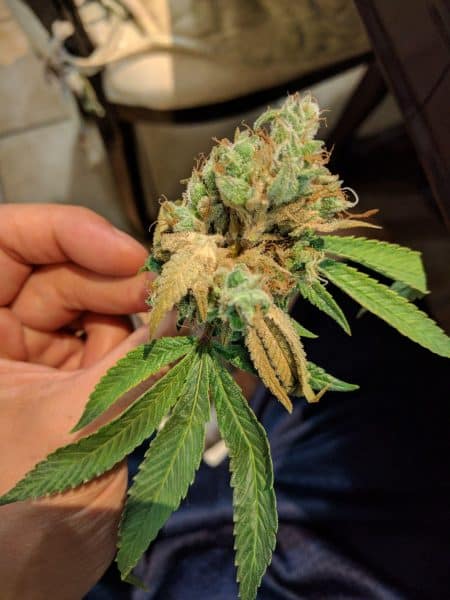
DO NOT SMOKE BUD ROT – This mold can make you very sick if ingested. Remove the mold and throw it away. It’s not worth salvaging when the rest of the plant is okay to smoke/use.
Here are some of the things we’ll cover in this blog post:
- What is bud rot?
- Factors leading to bud rot
- How to remove bud rot
- How to salvage buds that have been affected by bud rot
Understanding Bud Rot and Cannabis Mold
What is Bud Rot?
Bud rot is a fungal disease that affects cannabis plants, especially during the flowering stage. It’s caused by a fungus called Botrytis cinerea, which is also known as gray mold. Bud rot can quickly spread to healthy buds if it’s not caught early, and it can ruin an entire harvest. It is a common problem in humid climates and can be devastating to a harvest.
What Does Bud Rot Look Like?
Bud rot can be difficult to detect in the early stages. However, as it progresses, it will start to show some of the following signs:
- Gray or brown mold on the buds
- Soft, mushy buds
- Wilting or dying leaves
- A bad, moldy smell
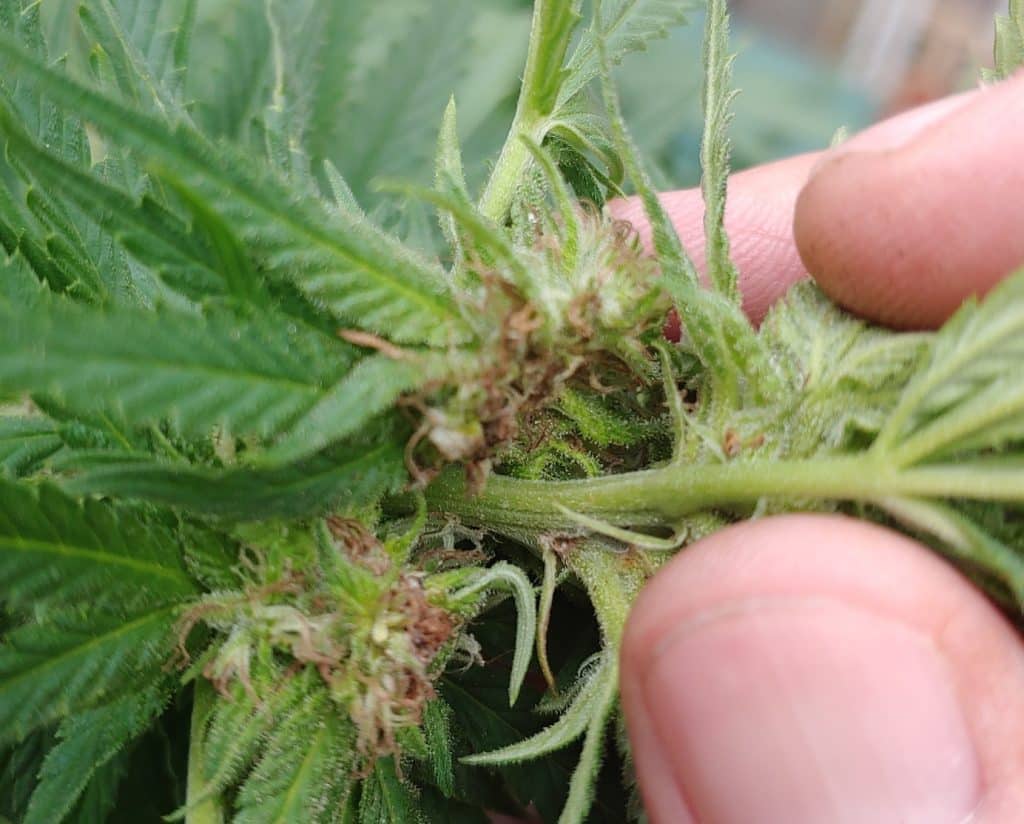
Adopted from https://support.ilovegrowingmarijuana.com/t/bud-rot-early-stages/52821
Cannabis Mold
Cannabis mold is a general term that refers to any type of mold that can grow on cannabis plants. In addition to bud rot, there are a number of other types of mold that can affect cannabis plants, including:
- Powdery mildew: Powdery mildew is a white, powdery fungus that can grow on the leaves and stems of cannabis plants. It can cause the leaves to turn yellow and drop off, and it can also reduce the yield of the plant.
- Leaf spot: Leaf spot is a fungal disease that can cause brown or black spots to develop on the leaves of cannabis plants. It can also cause the leaves to curl and fall off.
- Root rot: Root rot is a fungal disease that affects the roots of cannabis plants. It can cause the roots to decay and the plant to wilt and die.
How Does Cannabis Mold Develop?
Cannabis mold can develop in a number of ways. It can be spread by spores from other infected plants, by insects, or by water splashing on the plants. It can also develop on plants that are stressed or that have been damaged.
What Are the Effects of Cannabis Mold on Plant Health and Yield?
Cannabis mold can have a number of negative effects on plant health and yield. It can:
- Cause the leaves to turn yellow and drop off
- Reduce the size and quality of the buds
- Cause the plant to wilt and die
- Ruin an entire harvest
Factors Leading to Bud Rot and Mold
High Humidity
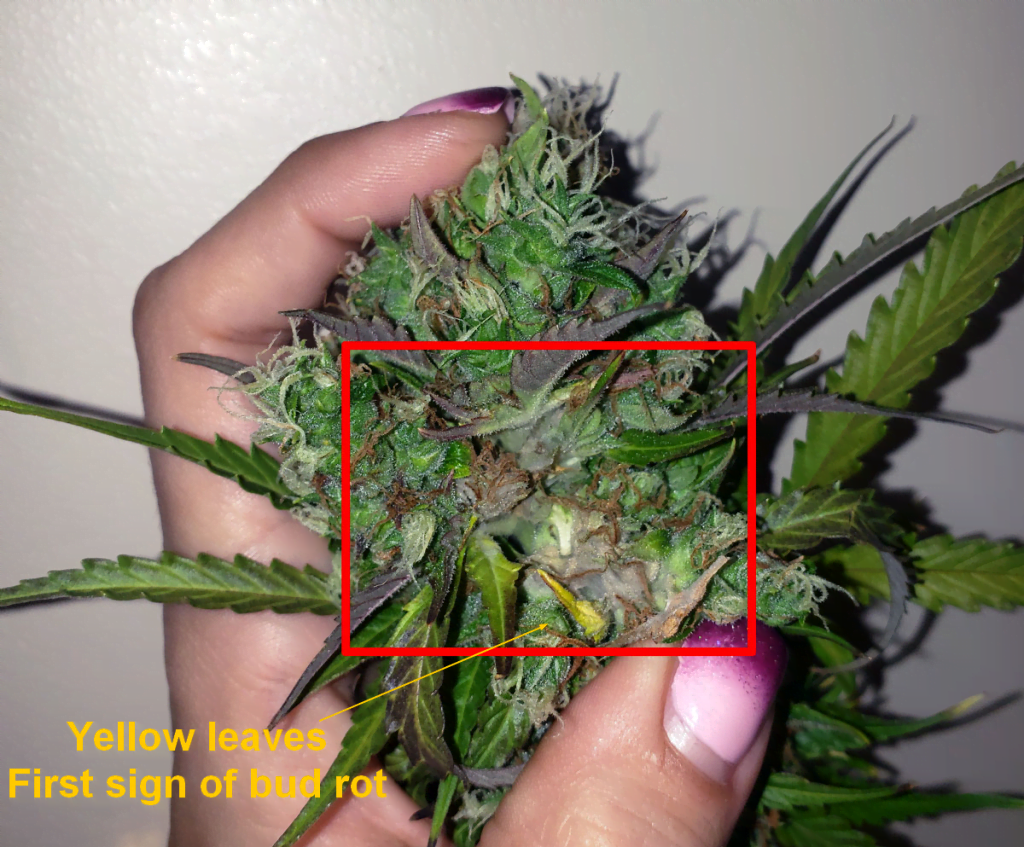
Adopted from https://www.growweedeasy.com/cannabis-plant-problems/bud-rot
One of the most important factors that contribute to bud rot and mold is high humidity. The ideal humidity level for cannabis plants is 40-50%. However, if the humidity level is higher than 60%, it can create the perfect environment for mold to grow.
Poor Air Circulation
Most of the time poor air circulation contributes to creating a high moisture environment and thus presenting a perfect breeding ground for mold. It is important to make sure that there is good airflow around your plants to help prevent mold and rot. For indoor plants you can buy air flow equipment or complete kits.
How High Humidity Contributes to Mold Development
Fungi and mold need moisture to survive and grow. When the humidity level is high, it provides the bad fungi with the moisture they need to thrive. The ideal humidity level for cannabis plants in the flowering stage is 40-50%. If the humidity level is higher than 60%, it can create the perfect environment for bud rot and mold to develop.
In addition, high humidity can also damage the plant’s tissues, making them more susceptible to infection.
Solution
There are a number of things you can do to prevent bud rot and mold from affecting your cannabis plants. Here are a few tips:
- Proper ventilation: Make sure there is good airflow around your plants. You can do this by using fans or by installing a ventilation system in your grow room.
- Defoliation: Removing leaves from a bushy plant can help improve airflow between leaves and branches.
- Dehumidifiers: If the humidity level in your grow room is consistently high, you may need to use a dehumidifier.
- Humidity monitoring: It is important to monitor the humidity level in your grow room regularly using a humidity monitoring device. This will help you to identify any problems early on
2. Excessive Moisture
Excessive moisture is one of the most common causes of mold growth in cannabis plants. When buds are wet, they provide a perfect environment for mold to grow. This is especially true if the buds are not allowed to dry completely after watering.
Mold spores can also be spread by water splashing on the plants. This is why it is important to water your plants carefully and to avoid getting the buds wet.
Solution
- Proper watering techniques: Water your plants deeply, but infrequently. This will allow the soil to dry out completely between waterings.
- Well-draining soil: Use soil that drains well and that does not retain moisture.
- Avoiding overwatering: It is important to avoid overwatering your plants. Overwatering can lead to root rot, which can make the plants more susceptible to mold. Special pots such as fabric pots help in proper water drainage and diminish the impacts of over watering.
- Avoid water on bud sites: Spraying a flowering cannabis plant can lead to trapped moisture in the buds and then mold. Add water directly to the soil when feeding/watering.
3. Crowded Canopy and Poor Plant Spacing
When cannabis plants are overcrowded, it creates a humid, stagnant environment that is perfect for mold to grow. This is because the leaves of the plants block airflow, which prevents moisture from evaporating. In addition, the close proximity of the plants can make it easy for mold spores to spread.
Solution
- Pruning: Pruning can help to improve airflow and prevent moisture from building up on the leaves. When pruning, focus on removing any leaves that are blocking airflow or that are touching other plants. Special purning tools are available in market which are easy to maintain and sterilize.
- Maintaining proper plant spacing: When planting cannabis plants, it is important to leave enough space between them so that they have plenty of room to grow. This will help to prevent the leaves from blocking airflow and will also make it more difficult for mold spores to spread.
- Defoliation: Defoliation is the process of removing leaves from cannabis plants. This can be done to improve airflow and expose the buds to more light. When defoliating, it is important to remove only the leaves that are blocking airflow or that are shading the buds.
4. Inadequate Light Exposure
Inadequate light exposure can lead to a number of problems for cannabis plants, including mold. When plants do not receive enough light, they become stressed and more susceptible to infection. In addition, low light levels can lead to increased humidity, which creates a perfect environment for mold to grow.
Solution
- Proper lighting setup: Make sure your grow lights are properly spaced and that they are providing enough light to your plants. You can use a light meter to measure the light intensity and make sure it is within the recommended range.
- Vegetative stage: Cannabis plants need 18-24 hours of light per day during the vegetative stage.
- Flowering and budding stage: Cannabis plants need 12 hours of light per day during the flowering stage.
- Optimizing light intensity and duration: The amount of light that your plants need will depend on the strain, the stage of growth, and the environment. For indoor growth, The average light intensity for cannabis plants during the budding stage is 800 to 1500 µmol/m²/s PPFD (photosynthetic photon flux density).
5. Infected Plant Material or Soil
Mold spores can be easily spread from infected plant material or soil to healthy plants. This can happen in a number of ways, including:
- Contact: If you touch an infected plant or soil, you can easily transfer the mold spores to your hands. If you then touch a healthy plant, you can spread mold spores to it.
- Air: Mold spores can also be spread through the air. If you are growing your plants indoors, this is especially important to consider. If you have an infected plant, the mold spores can easily spread to other plants through the air.
- Water: Mold spores can also be spread through water. If you water your plants with water that has mold spores in it, you can spread the mold spores to the plants.
Solution
- Sanitizing Tools: It is important to sanitize your tools after using them on infected plants or soil. This will help to prevent the spread of mold spores to healthy plants. You can sanitize your tools with a diluted bleach solution or with rubbing alcohol.
- Using Disease-Free Soil: It is important to use disease-free soil when growing cannabis plants. This will help to prevent the introduction of mold spores into your growing space. You can purchase disease-free soil from a reputable nursery or garden center.
- Quarantine Procedures: If you suspect that a plant is infected with mold, it is important to quarantine it immediately. This will help to prevent the spread of mold to other plants. The quarantined plant should be kept in a separate area of your grow space and should not be watered with the same water as the other plants.
- Clean your Grow Space regularly: If you’re growing indoors inside a tent be sure to give it a good clean and sanitization after every grow. Be sure to remove dead plant materials from the tent.
Introducing the All-in-One Grow Kit for 3 Plants (2? x 4? x 6.5?), designed to elevate your indoor growing experience while combating bud rot. Prevent bud rot effectively with the MarsHydro Grow Tent featuring sturdy iron frame and reflective mylar for optimal light distribution. The MarsHydro TSL2000 LED Grow Light offers energy-efficient, full-spectrum illumination, ensuring robust growth. The 4? Inline Fan and Carbon Air Filter kit guarantees efficient ventilation and moisture control.
Salvaging Bud Rot Affected Plants
If you detect bud rot on your cannabis plants, it is important to take action immediately to salvage the plants. Here are some steps you can take:
- Identify and remove affected areas. The first step is to identify the affected areas of the plant. Bud rot typically appears as gray or brown mold on the buds or leaves. Once you have identified the affected areas, you will need to remove them. You can do this by cutting off the affected buds or leaves with a pair of sharp scissors.
- Isolate infected plants. Once you have removed the affected areas, you will need to isolate the infected plants from the healthy plants. This will help to prevent the spread of mold. You can isolate the infected plants by placing them in a separate grow space or by placing them in a quarantine tent.
- Apply natural remedies. There are a number of natural remedies that you can use to treat bud rot. One popular remedy is to use a hydrogen peroxide solution. To make a hydrogen peroxide solution, mix one-part hydrogen peroxide with four parts water. Apply the solution to the affected areas of the plant with a spray bottle.
- Ongoing monitoring and prevention. Once you have taken steps to treat the bud rot, you will need to continue to monitor the plants for signs of infection. You should also take steps to prevent the recurrence of bud rot. This includes:
- Maintaining proper humidity levels in your growing space.
- Providing good airflow and ventilation.
- Using disease-free soil.
- Sanitizing your tools after using them on the plants.
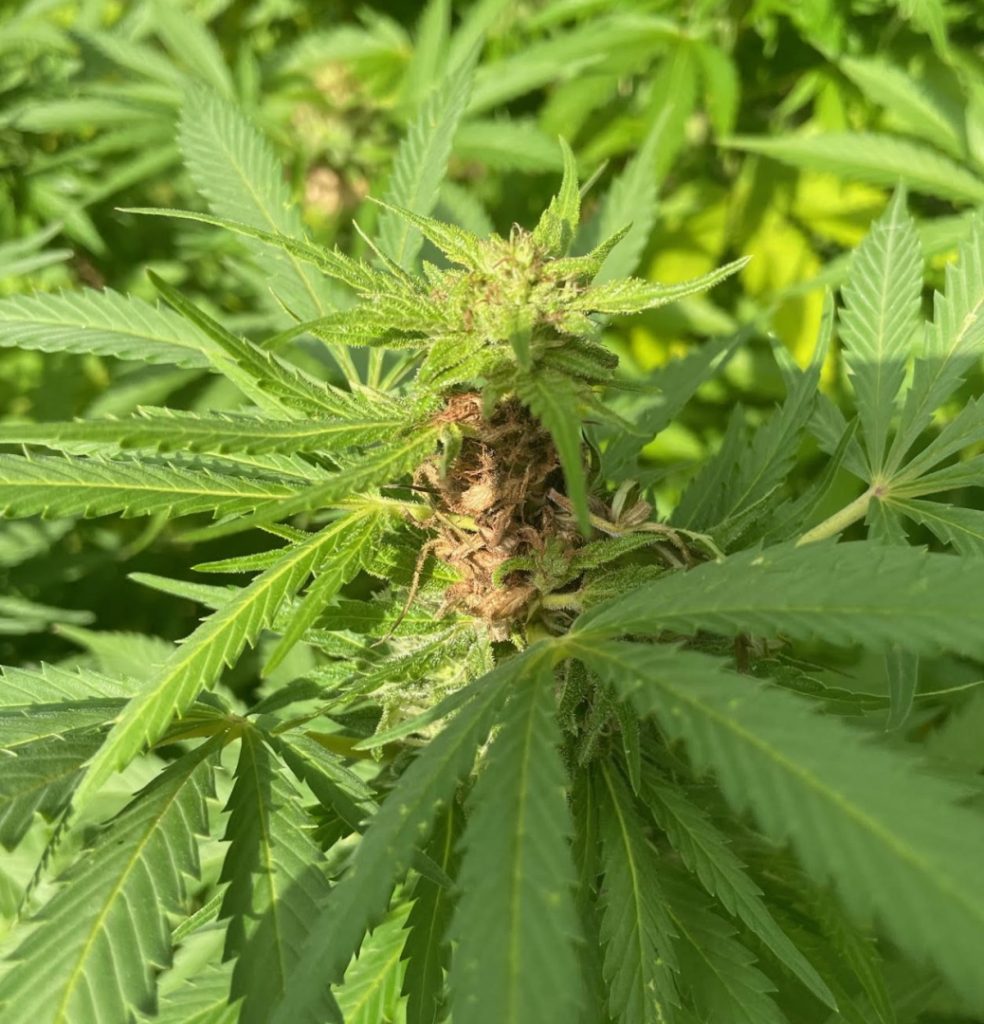
Tips to prevent bud rot in the first place
Here are some strategies growers can adopt to prevent bud rot:
- Get a strain meant for your local climate.
- Protect your buds from rain.
- Maintain proper humidity levels. Bud rot thrives in humid environments. The ideal humidity level for cannabis plants is between 40-50%. If the humidity level in your grow space is higher than 60%, you are at risk of bud rot. You can use a dehumidifier to reduce the humidity in your growing space.
- Provide good airflow and ventilation. Good airflow and ventilation will help to dry the plants and prevent mold growth. You can increase airflow by using fans or by installing a ventilation system in your growing space.
- Use disease-free soil. If you use disease-free soil, you will be less likely to introduce mold spores to your grow space. Don’t use soil dug up from your backyard, it can be full of “bad things”. You can purchase clean disease-free soil from a reputable nursery or garden center.
- Sanitize your tools. After using your tools on your plants, be sure to sanitize them with a diluted bleach solution or rubbing alcohol. This will help to prevent the spread of mold spores from plant to plant.
- Inspect your plants regularly. Inspect your plants regularly for signs of mold growth. If you see any signs of mold, take action immediately to remove the affected areas.
- Remove any dead or dying leaves. Dead or dying leaves can provide a breeding ground for mold. Be sure to remove any dead or dying leaves from your plants as soon as you see them.
- Keep your grow space clean and free of debris. Debris can provide a breeding ground for mold. Be sure to keep your growing space clean and free of debris.
- Harvest your plants at the right time. If you harvest your plants too late, they will be more susceptible to bud rot. Be sure to harvest your plants when they are ripe and ready to go.
What to Avoid
- Fungicides: Fungicides are not effective at stopping bud rot and can make your buds taste, smell, and look terrible. Some growers use fungicides made specifically for Botrytis in the vegetative stage, but they can only be used as a preventative before any buds have formed.
- Neem Oil: Neem oil is a natural pesticide that can be effective against some types of mold, but it is not effective against bud rot. Neem oil can also leave a bitter taste on your buds.
- Burning Sulfur: Burning sulfur is a traditional method of controlling mold, but it is not effective against bud rot and can be harmful to your plants.
What to Do Instead
- Prevent bud rot in the first place: The best way to prevent bud rot is to maintain proper humidity levels, provide good airflow and ventilation, and use disease-free soil. You should also inspect your plants regularly for signs of mold growth and remove any affected areas immediately.
- If you do get bud rot: If you do get bud rot, there is no way to save the affected buds. You should cut off the affected areas and isolate the plant from the others. You should also increase airflow and ventilation in your grow space and monitor the plant closely for signs of further infection.
Bud rot is a serious problem that can ruin a cannabis harvest. However, by following the strategies outlined in this blog post, you can help to prevent bud rot and protect your crop.
Reefertilizer products are a great way to help prevent bud rot and ensure a healthy harvest. Reefertilizer products are designed to feed your plants the nutrients they need to thrive, while also helping to protect them from mold and disease by keeping them healthy.
Reefertilizer also offers all-in-one growing kits that make it easy to get started growing cannabis. These kits include everything you need to get started, from the seeds to the nutrients to the grow tent.
If you are looking for a way to prevent bud rot and ensure a healthy cannabis harvest, Reefertilizer products are a great option.
Contact us today to learn more and to order your products.
If you want to learn even more about growing good cannabis, we offer a free 40+ page guide full of images.
Now available on Amazon.
Sign up for our newsletter and download the digital copy today!
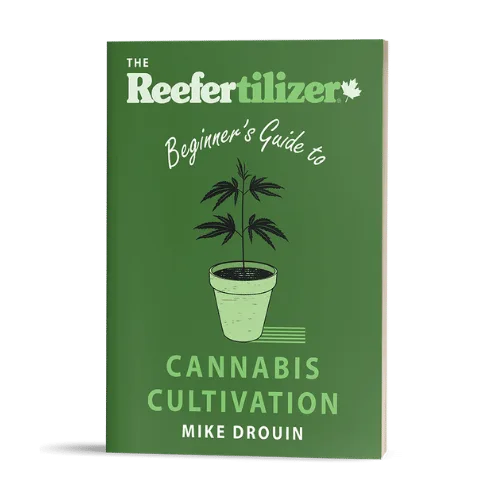
This guide will answer many questions about growing cannabis, like the following...
Selecting Seeds
Identify and Correct Problems
Maximize Yield
Much More...
Get a Chance to INSTANTLY WIN a Reefertilizer Nutrient Kit When You Sign Up.
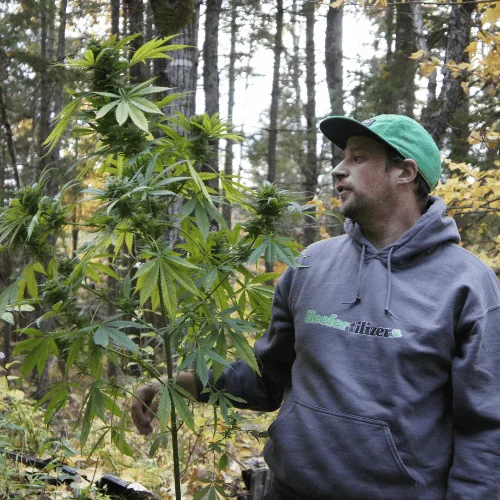
Mike Drouin is the co-founder of Reefertilizer. He’s an experienced craft cannabis grower and a writer of many articles regarding the process. Mike lives on Vancouver Island and enjoys cycling and camping and will sometimes combine the two.
